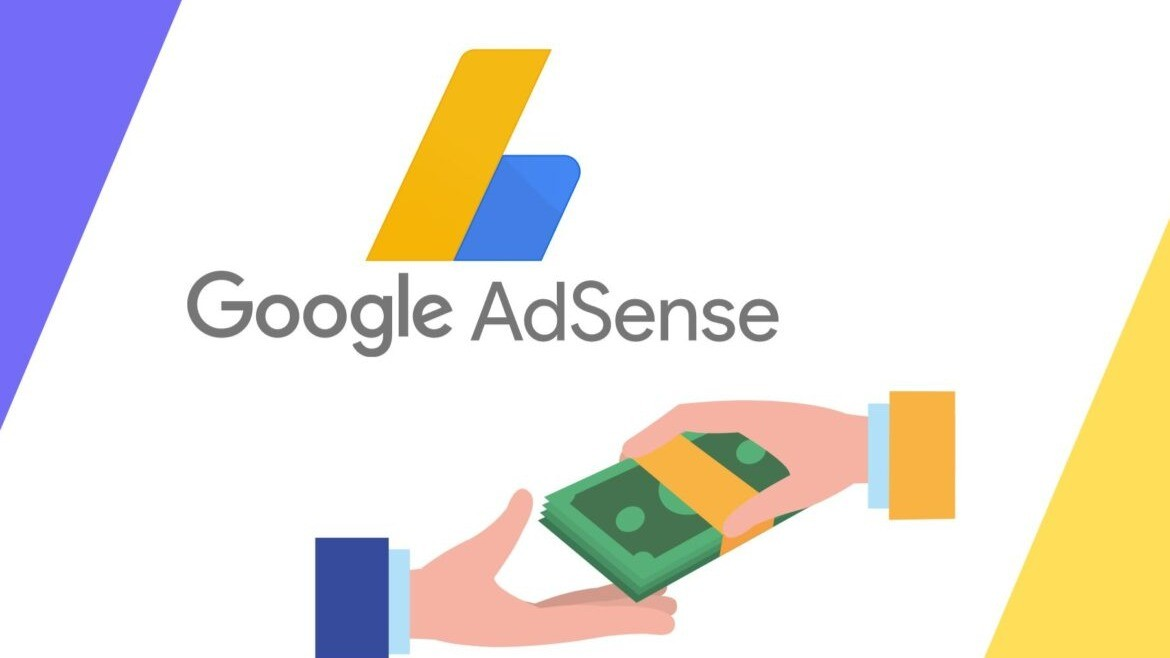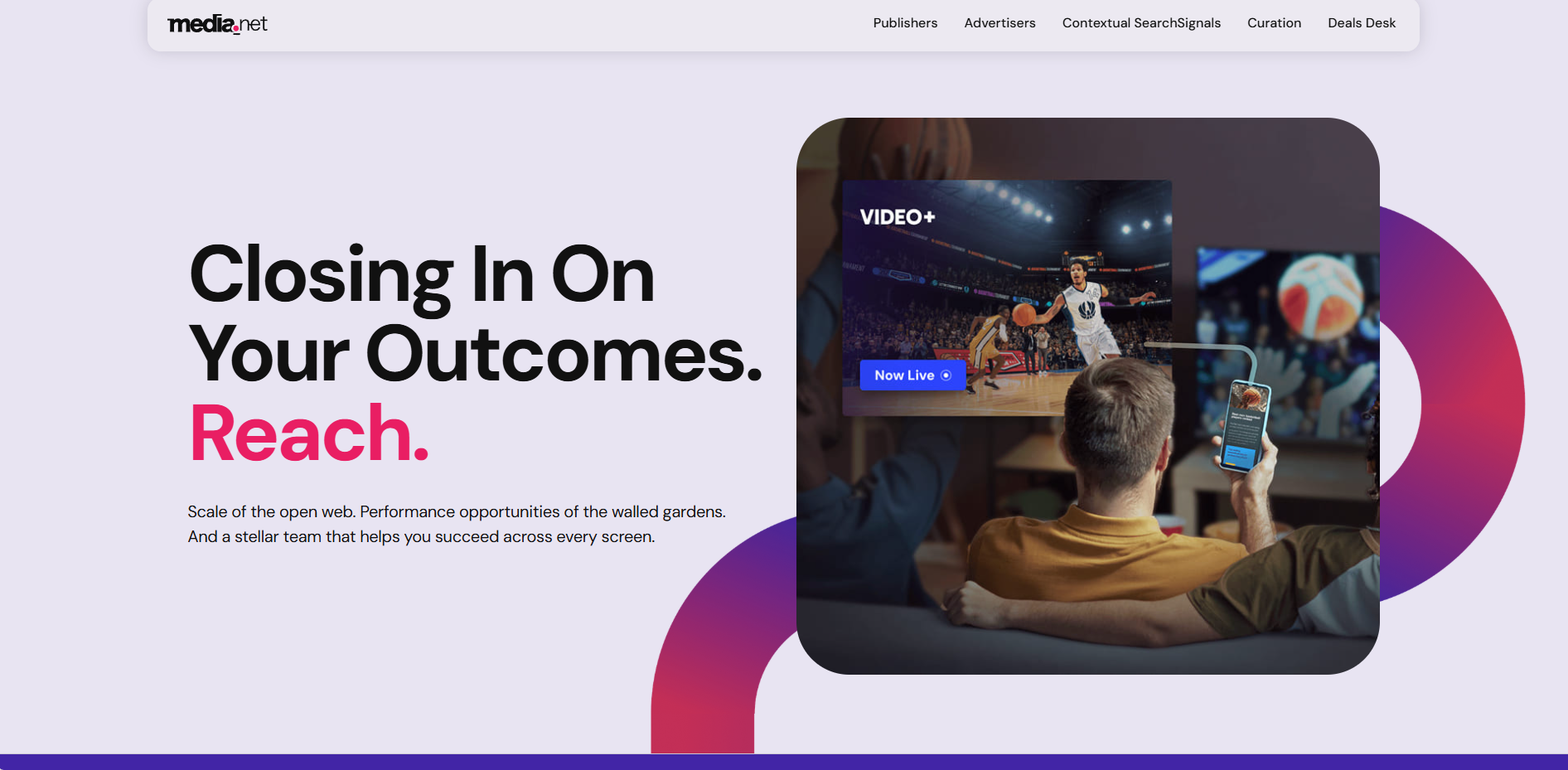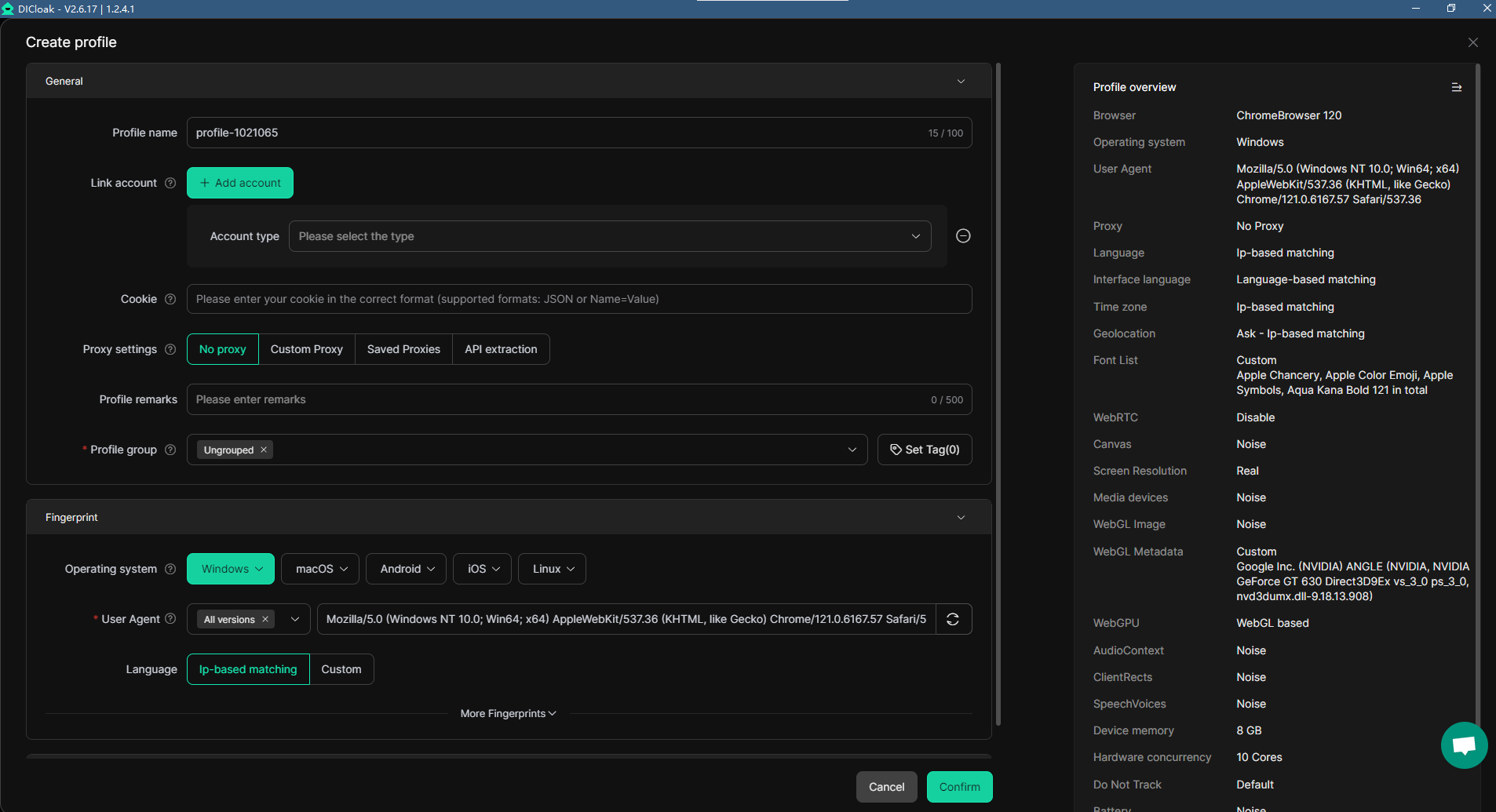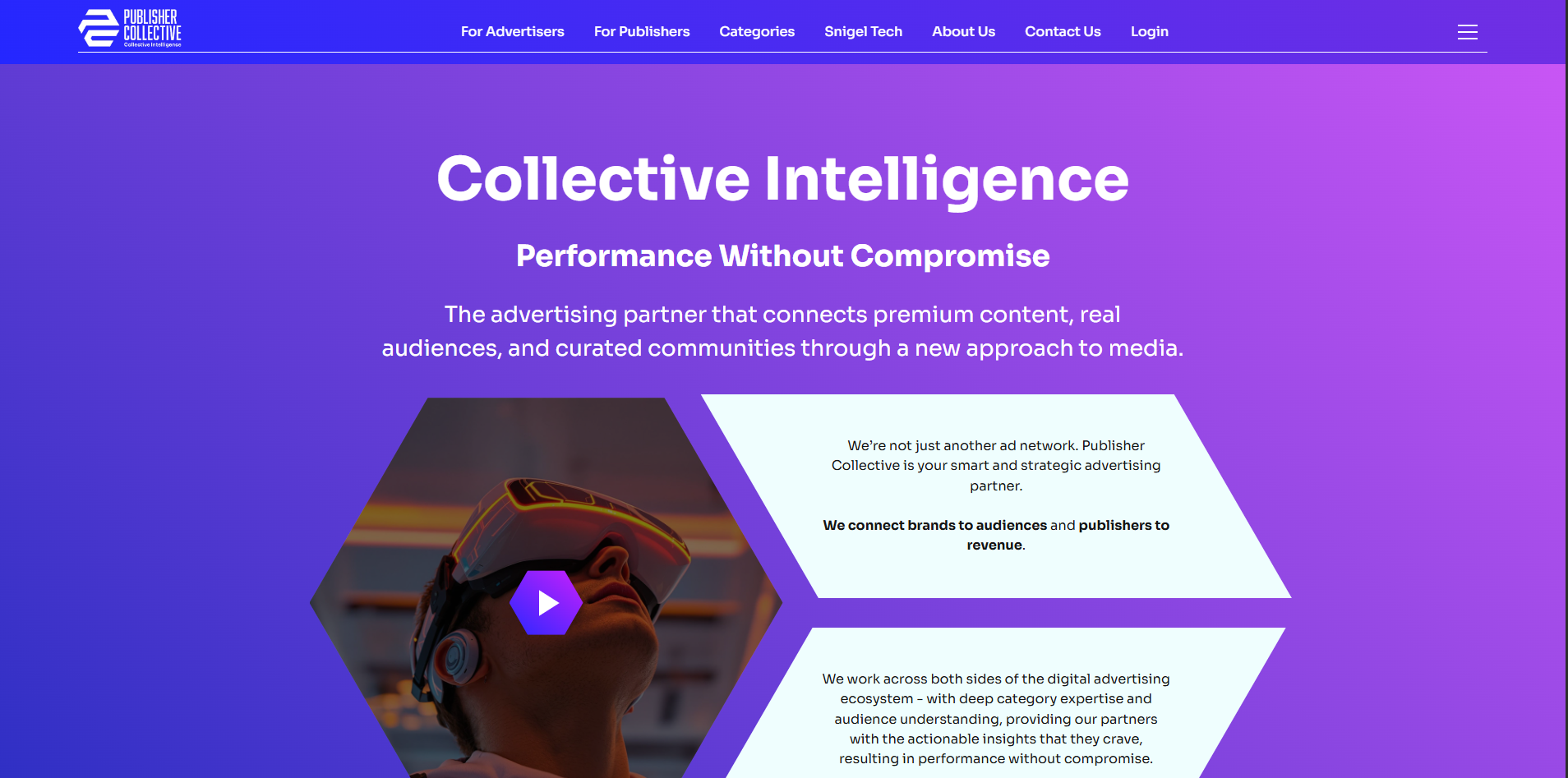AdSense is one of the most popular ad monetization solutions available. While it works well for many publishers, those looking to maximize revenue may benefit from exploring AdSense alternatives or integrating additional monetization strategies like header bidding. Some publishers may find that combining AdSense with other solutions helps them achieve better results.
In this guide, we’ll explore when it’s time to consider switching from AdSense, along with the top 8 AdSense alternatives for 2025. But first, we’ll explain how AdSense compares to other options like ad exchanges and header bidding networks.
What Is AdSense?
AdSense is an ad network that connects publishers with advertisers. It gathers ad inventory from multiple publishers, bundles it, and sells it to advertisers on their behalf. This is different from programmatic platforms like ad exchanges and header bidding.
Ad exchanges, like Google AdX, allow publishers and advertisers to buy and sell ad space through real-time auctions. The ad unit goes to the highest bidder. These exchanges are also known as Supply-Side Platforms (SSPs) because they connect both publishers and advertisers.
Header bidding partners, such as Publisher Collective, link publishers to multiple ad exchanges. This increases competition and gives publishers access to various SSPs. Some SSPs specialize in certain niches, offering higher cost-per-thousand impressions (CPM), while others focus on open marketplaces with a wider variety of advertisers.

Why Consider AdSense Alternatives?
There are several reasons to explore AdSense alternatives when monetizing your website. Here’s why you should consider diversifying your ad revenue:
- Maximizing Ad Earnings
Relying solely on Google AdSense can limit your revenue potential. Different ad networks offer varied monetization methods and higher earnings depending on your niche. By considering AdSense alternatives, you open the door to maximizing your income. - Niche-Specific Opportunities
Some AdSense alternatives specialize in niches that AdSense might not cater to effectively. For example, Media.net is ideal for finance, health, or tech websites. It offers more targeted ads that could result in higher revenue for publishers in these sectors. - Diverse Ad Formats and StrategiesAdSense alternatives, such as PropellerAds, offer a wide variety of ad formats like pop-unders, interstitials, and push notifications. These can provide higher CPM rates and greater flexibility in ad placement compared to traditional display ads from Google AdSense.
- Increased Competition and Better Rates
Platforms like Taboola and Outbrain focus on content recommendation, encouraging more engagement and higher click-through rates. These platforms often outperform Google’s display ads, especially for content-driven sites like blogs and news outlets. - Testing and Optimization
Using AdSense alternatives for publishers allows for testing multiple ad networks. Platforms like Ezoic use AI to optimize ad placement and performance, ensuring that ads are shown in the most effective locations, thus increasing your potential earnings. - Diversifying Your Revenue Streams
Diversification is key to reducing reliance on a single income source. By using alternatives to Google AdSense, you can tap into multiple ad networks that may have better payouts or fill rates, ensuring consistent revenue even if one network underperforms.
Exploring AdSense alternatives offers flexibility, better earnings, and more opportunities to maximize your ad revenue.
Top 8 AdSense Alternatives for 2025
While Google AdSense remains one of the most popular ways to monetize a website, there are many AdSense alternatives that offer different advantages, from better payouts to more flexible ad formats. If you’re looking to increase your ad revenue, exploring alternative ad networks can help you find the best fit for your site’s needs. Here’s a detailed overview of the top 8 AdSense alternatives for 2025:
Publisher Collective is a premium ad network that specializes in header bidding technology. It helps publishers earn more by increasing competition among advertisers. This network also provides advanced ad solutions tailored to maximize revenue.
Features:
- Header bidding for better competition among advertisers.
- Access to premium ad partners.
- Provides programmatic advertising solutions for higher earnings.
Pros:
- Google Certified Publishing Partner, ensuring access to top-tier advertisers.
- Advanced analytics to optimize ad performance.
- High-quality interactive ads like polls and quizzes.
Cons:
- Requires a minimum traffic threshold for best results.
- Setup can be more complex than other networks.
Ezoic uses AI-driven ad optimization to help publishers maximize revenue. It integrates with Google AdX and optimizes ad placements for the best user experience and highest earnings.
Features:
- AI-powered ad placement optimization.
- Integration with Google AdX.
- Site speed improvement features.
Pros:
- Automated ad placements tailored to user behavior.
- Comprehensive analytics for tracking and improving performance.
- Supports multiple ad formats, including video ads.
Cons:
- Setup may require some technical knowledge.
- Performance may vary based on site niche and traffic levels.
3. Media.net

Media.net is a strong AdSense alternative, offering contextual advertising powered by Yahoo and Bing. It’s particularly effective for content-driven websites and blogs, providing native ads that blend with the content.
Features:
- Contextual ads powered by Yahoo and Bing.
- High-quality native advertising.
- Programmatic display ads.
Pros:
- Customizable ad styles to fit your site’s design.
- High-quality ad content that provides a seamless user experience.
- Strong RPM performance, especially in specific niches.
Cons:
- The approval process can be strict.
- Revenue potential may be lower in some verticals.
Monumetric is a premium ad network offering client-side header bidding and access to a private marketplace for better ad inventory control and higher earnings.
Features:
- Client-side header bidding for maximizing revenue.
- Access to a private ad marketplace.
- Tiered ad plans based on traffic.
Pros:
- Dedicated support to help publishers optimize their ads.
- Premium ad inventory for higher CPM rates.
- Flexible monetization options for different traffic levels.
Cons:
- Minimum traffic requirements for certain plans.
- Reporting delays can impact real-time optimization.
PropellerAds is known for its wide variety of alternative ad formats like popunder ads and push notifications. It offers high CPM rates and has a global reach, making it ideal for publishers targeting international audiences.
Features:
- Popunder ads, push notifications, and more.
- Advanced targeting options for precise audience reach.
- Real-time traffic quality monitoring.
Pros:
- High CPM rates, especially for mobile traffic.
- Global reach, catering to international audiences.
- ISO/IEC 27001 Safety Certification for data security.
Cons:
- Ad formats can be intrusive for some users.
- Limited reporting features compared to other networks.
ylliX is an alternative monetization network known for its aggressive ad formats like popunder ads. It offers instant approval, making it an excellent choice for new publishers looking to start monetizing quickly.
Features:
- Instant approval for new publishers.
- Aggressive ad formats, including popunder ads.
- Supports mobile redirects and display ads.
Pros:
- Fast approval process.
- High fill rate, ensuring consistent ad delivery.
- Referral program for additional revenue.
Cons:
- Low CPC rates, affecting overall earnings.
- Ad quality can vary, which may impact user experience.
Adsterra is a beginner-friendly ad network that offers a variety of ad formats, including popunder ads and direct ad sales. It’s ideal for publishers looking for anti-adblock features and programmatic ad solutions.
Features:
- Anti-adblock features to prevent revenue loss.
- Offers multiple ad formats, including popunder ads and direct ad sales.
- Fast ad moderation for quick approval.
Pros:
- Competitive CPM rates, especially for adult content sites.
- Flexible payment options, including PayPal and cryptocurrency.
- Fast ad approval process.
Cons:
- Aggressive ad formats can be intrusive for some users.
- Ad quality can fluctuate, affecting the overall user experience.
Skimlinks is a content monetization platform that automates affiliate link creation within articles. It’s perfect for publishers who want to earn passive income by recommending products through affiliate marketing.
Features:
- Automated affiliate link creation.
- Affiliate marketing integration with eCommerce sites.
- Product recommendations tailored to content.
Pros:
- Easy integration with existing content.
- Passive income through automated affiliate links.
- Wide range of affiliate programs for various niches.
Cons:
- Lower commission rates compared to direct affiliate partnerships.
- Dependent on affiliate sales, which can fluctuate.
Each of these AdSense alternatives offers unique features and benefits. The best choice for you depends on your website's niche, traffic volume, and monetization goals. Exploring multiple networks and testing them is a great strategy to find the one that best meets your needs.
How to Choose the Right AdSense Alternative
Choosing the right AdSense alternative is crucial for maximizing your website's revenue potential. With so many ad networks available, it can be overwhelming to know where to start. Here are some key factors to consider when selecting the best AdSense alternatives for your website:
Consider Your Website's Niche and Audience
When selecting AdSense alternatives, it's important to think about your website’s niche and audience. Different ad networks specialize in various types of content, so you’ll want to choose a network that aligns with your site’s focus. For example, if you run a tech blog, Media.net or PropellerAds could be a great fit because they offer contextual ads and native ads that appeal to a tech-savvy audience.
- Niche-specific ad networks: Some ad networks focus on certain markets. For instance, Finance-focused networks might work well for a financial advice website, while health and wellness networks would be ideal for a fitness blog.
- Audience targeting: Look for networks that offer detailed audience targeting to ensure the ads displayed match your visitors' interests. This can lead to higher ad engagement and better results.
- Monetizing niche content: If your website targets a specific demographic, find a network that allows you to monetize niche content effectively. Advertisers are often willing to pay more for highly targeted traffic.
Evaluate Revenue Potential and Payment Terms
To choose the best AdSense alternative, you need to evaluate the revenue potential of each ad network. Not all networks are the same when it comes to CPM rates (cost per thousand impressions) or CPC rates (cost per click), so it's essential to compare them.
- Ad revenue potential: Look for networks with competitive CPM rates and those that fit your site’s traffic volume. For example, Ezoic offers advanced optimization tools that can help you boost ad revenue potential by automatically adjusting placements.
- Ad payment terms: Different networks have varying payment thresholds and payout frequencies. Ensure the network aligns with your revenue goals and offers payment options that work for you.
- Revenue goals: If you're aiming for consistent, long-term revenue, consider networks that offer regular payouts and stable earnings. PropellerAds, for instance, has high CPM rates and works well for publishers with international traffic.
Assess Ad Format Variety and User Experience
Another crucial factor when selecting AdSense alternatives is the variety of ad formats and the impact on user experience. The more ad format options a network offers, the more flexibility you’ll have in monetizing your website.
- Ad format variety: Choose networks that provide multiple ad formats, such as native ads, display ads, video ads, and banner ads. Networks like Adsterra and Skimlinks offer a wide range of formats to suit different content types.
- User experience optimization: Ads should not compromise the user experience. Look for networks that offer responsive ads that adjust to different screen sizes and devices. This ensures a seamless experience for visitors, which can result in better engagement and higher ad earnings.
- Ad placement strategy: The placement of ads on your site plays a significant role in ad engagement. Networks that offer advanced placement strategies can help ensure your ads don’t disrupt the user experience while maximizing visibility.
By carefully considering your website’s niche, revenue potential, and the user experience, you can select the best AdSense alternative that meets your publisher needs and helps you maximize ad revenue.
Best Practices for Implementing AdSense Alternatives
When switching to AdSense alternatives, it’s important to follow key practices to maximize your revenue and ensure success. Here are the best strategies:
Integrate Multiple Ad Networks for Diversification
Using multiple ad networks helps diversify your income, reducing reliance on one source.
- Revenue diversification: Combining networks like PropellerAds and Ezoic can fill gaps if one network underperforms.
- Ad mediation: Use ad mediation tools to automatically select the highest-paying ad across multiple networks.
- Cross-network integration: Header bidding increases competition, maximizing ad revenue.
Monitor and Optimize Ad Performance Regularly
Regularly track and optimize ad performance to boost earnings.
- Tracking performance: Monitor CTR, RPM, and conversion rates to understand which ads perform best.
- A/B testing: Test different ad formats and placements to find what works best for your audience.
- Ad effectiveness: Ad optimization ensures better results over time.
Ensure Compliance with Ad Network Policies
Stay compliant with each network's policies to avoid penalties.
- Network compliance: Follow content and traffic guidelines from each ad network.
- Prohibited content: Avoid violating rules around content like misleading ads or harmful material.
- Policy updates: Keep up with ad network policies to maintain compliance.
By diversifying networks, optimizing ads, and ensuring compliance, you can successfully implement AdSense alternatives and increase your website's revenue.
Boost Your Ad Revenue with DICloak
While exploring AdSense alternatives is crucial for maximizing your ad revenue, ensuring secure management of multiple accounts and enhancing traffic performance is equally important. This is where DICloak comes in, offering powerful features to take your ad strategy to the next level.
- Safely Switch Between Ad Accounts
DICloak’s advanced fingerprinting technology and profile isolation make it easy to manage multiple ad accounts across platforms like Facebook, Google, TikTok, and Instagram. Each account operates with a fully isolated profile, allowing you to switch between them seamlessly without triggering bans. This is particularly valuable for agencies or advertisers managing several client accounts.

- Amplify Your Ad Performance with Traffic Simulation
In addition to optimizing ad accounts, DICloak’s AI Bot offers a smart way to drive consistent, organic-style traffic. This tool mimics real user behavior, which not only improves your SEO rankings but also supports search feed arbitrage campaigns. By using the AI Bot, you can achieve steady, organic-like traffic that boosts AdSense revenue and enhances ad relevance.

Incorporating DICloak into your ad management and traffic strategies ensures a secure, efficient way to maximize your revenue, whether you're managing multiple accounts or aiming for higher ad impressions and better optimization.
Conclusion
Exploring AdSense alternatives is key to optimizing your ad revenue. By choosing the right ad networks for publishers, you can diversify your income and find the best monetization options. Regularly testing ads, tracking performance, and adjusting placements will help maximize earnings. Using alternatives to Google AdSense can provide higher payouts and more control, ensuring a successful ad strategy for your website.
FAQs
- What are the best AdSense alternatives for publishers in 2025?
Some of the top AdSense alternatives include Ezoic, Media.net, PropellerAds, and Monumetric. These networks offer various ad formats and higher payouts, making them ideal for different types of websites. - How can I optimize my ad revenue with AdSense alternatives?
To optimize ad revenue, regularly test different ad formats, track performance metrics like CTR and RPM, and adjust your ad placement strategy. Using multi-network integration or header bidding can also help maximize earnings. - Can I use multiple ad networks at once?
Yes, using multiple ad networks is a great way to diversify your income. Ad mediation and header bidding allow you to manage multiple networks simultaneously, increasing competition and boosting revenue. - How do I ensure compliance with AdSense alternatives?
Each network has its own ad policies. Be sure to review their content guidelines, stay updated on any changes, and make sure your website aligns with their rules to avoid penalties or account suspension.